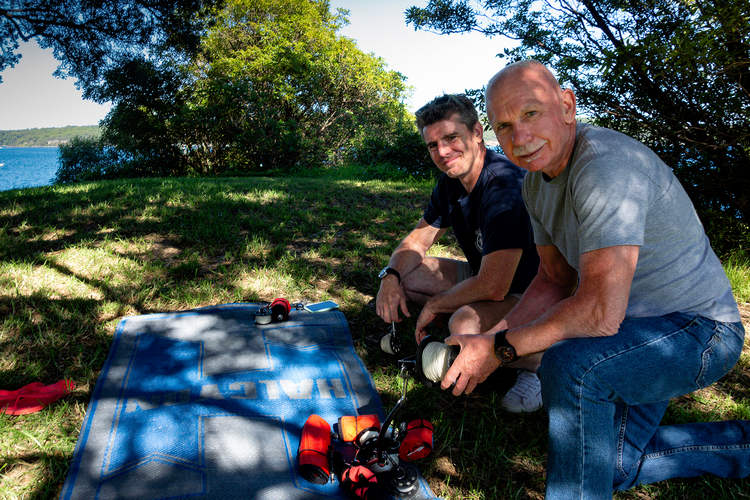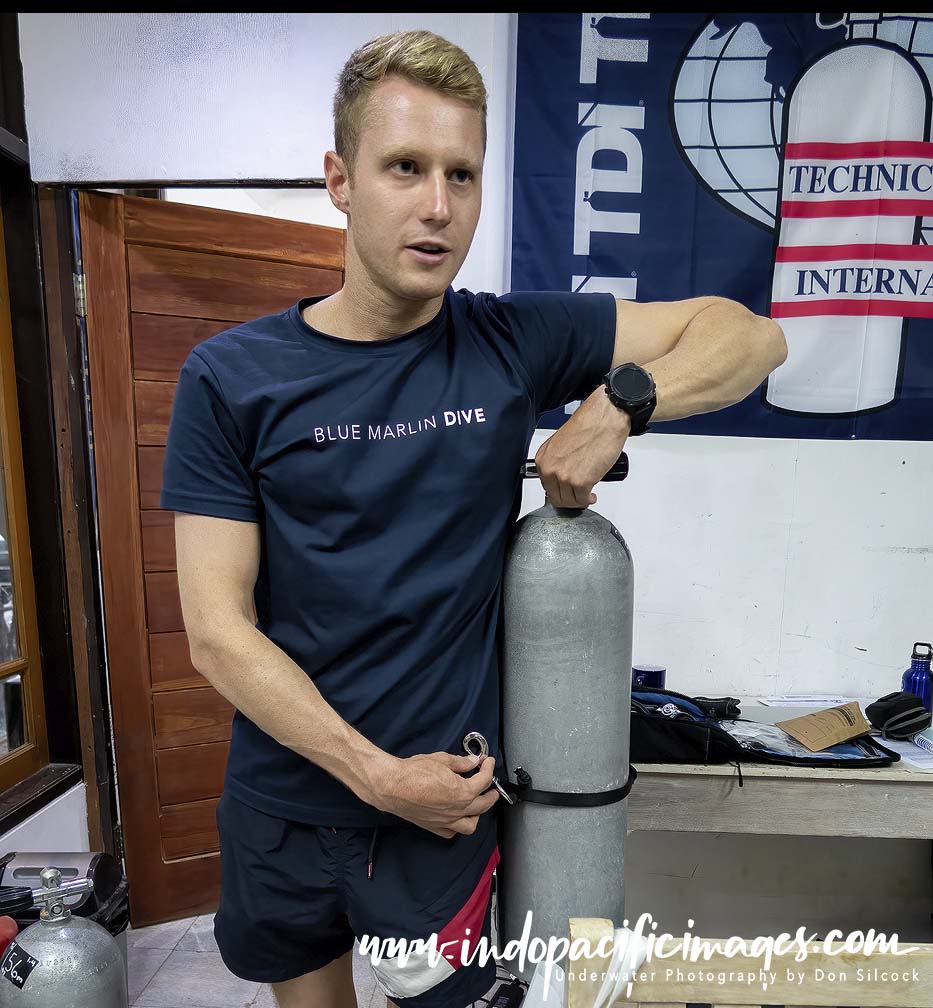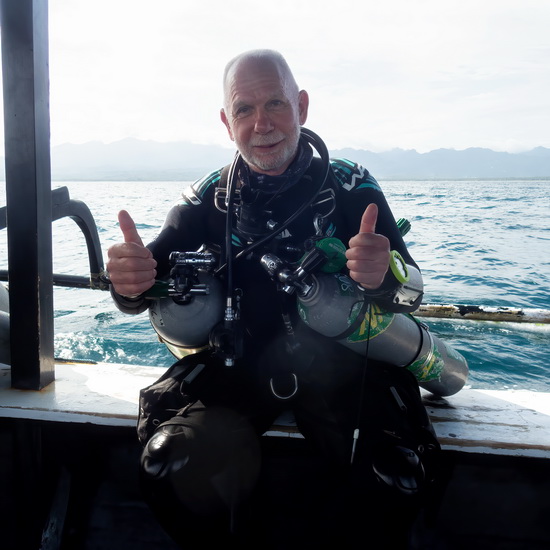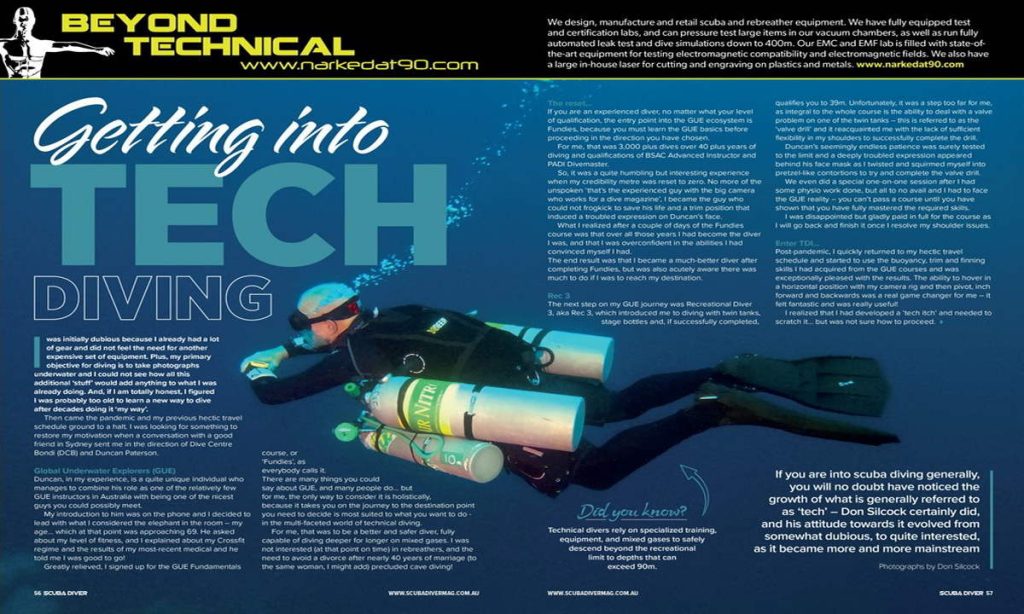Getting into Technical Diving… If you are into scuba diving, you will no doubt have noticed the growth of what is generally referred to as “Tech”.
I certainly have and my attitude towards it evolved from somewhat dubious, to quite interested, as it became more and more mainstream.
I was dubious as I already had a lot of gear and did not feel the need for another expensive set of equipment.
Plus, my primary objective for diving is to take photographs underwater. So, I could not see how all this additional “stuff” would add anything to what I was already doing.
And, if I am totally honest, I figured I was probably too old to learn a new way to dive after decades doing it “my way”.

Then came the pandemic and my previous hectic travel schedule ground to a halt. So I was looking for something to restore my motivation when a conversation with a good friend in Sydney sent me in the direction of Dive Centre Bondi (DCB) and Duncan Paterson.
Getting into Technical Diving – Global Underwater Explorers (GUE)

Duncan, in my experience, is a quite unique individual.
He is someone who manages to combine his role as one of the relatively few GUE instructors in Australia with being one of the nicest guys you could possibly meet.
My introduction to him was on the phone. And I decided to lead with what I considered the elephant in the room – my age…
Which at that point was approaching 69.
Duncan asked about my level of fitness, and I explained about my Crossfit regime and the results of my most recent medical and he told me I was good to go!
Greatly relieved I signed up for the GUE Fundamentals course, or “Fundies” as everybody calls it. There are many things you could say about GUE, and many people do… But for me the only way to consider it is holistically. Because it takes you on the journey to the destination point you need to decide is most suited to what you want to do – in the multi-faceted world of technical diving.
For me, that was to be a better and safer diver, fully capable of diving deeper for longer on mixed gases. I was not interested (at that point on time) in rebreathers. And the need to avoid a divorce after nearly 40 years of marriage (to the same woman I might add) precluded cave diving!
The Reset…
If you are an experienced diver, no matter what your level of qualification, the entry point into the GUE ecosystem is Fundies. Because you must learn the GUE basics before proceeding in the direction you have chosen.
For me that was 3000+ dives over 40+ years of diving. Plus qualifications of BSAC Advanced Instructor and PADI Divemaster. So, it was a quite humbling but interesting experience when my credibility meter was reset to zero. No more of the unspoken that’s the “experienced guy with the big camera who works for a dive magazine”. I became the guy who could not frog kick to save his life. And a trim position that induced a troubled expression on Duncan’s face.
What I realized after a couple of days of the Fundies course was that over all those years I had become the diver I was. And that I was overconfident in the abilities I had convinced myself I had. The end result was that I became a much better diver after completing Fundies. But was also acutely aware there was much to do if I was to reach my destination.
Getting into Technical Diving – Rec 3
The next step on my GUE journey was Recreational Diver 3, a.k.a. Rec 3. Which introduced me to diving with twin tanks, stage bottles and, if successfully completed, qualifies you to 39m. Unfortunately, it was a step too far for me as integral to the whole course is the ability to deal with a valve problem on one of the twin tanks. This is referred to as the ‘valve drill’… And it reacquainted me with the lack of sufficient flexibility in my shoulders to successfully complete the drill.
Duncan’s seemingly endless patience was surely tested to the limit. And a deeply troubled expression appeared behind his face mask as I twisted and squirmed myself into pretzel like contortions to try and complete the valve drill. We even did a special one-on-one session after I had some physio work done. But all to no avail and I had to face the GUE reality. You can’t pass a course until you have shown that you have fully mastered the required skills.
I was disappointed but gladly paid in full for the course as I will go back and finish it once I resolve my shoulder issues.
Getting into Technical Diving – Enter TDI…
Post pandemic I quickly returned to my hectic travel schedule. And started to use the buoyancy, trim and finning skills I had acquired from the GUE courses and was exceptionally pleased with the results.
The ability to hover in a horizontal position with my camera rig and then pivot, inch forward and backwards was a real game changer for me. It felt fantastic and was really useful!
I realized that I had developed a “tech itch” and needed to scratch it… but was not sure how to proceed.
I already travel with about 50kg of dive and underwater photography equipment. So, the additional bulk of adding the manifold, wings, backplates and regulators required for twin-tank diving was simply a non-starter.

That lead me to look at side-mount. Which doubles the amount of gas available but is much less equipment intensive than twin-tank diving. (Techies seem to hate the word air…). Eventually I decided on some Technical Diving International (TDI) courses in the Gili Islands. Which has become the main place for technical diving in Indonesia. Because of the deep waters around the islands and the availability of a recompression chamber in nearby Lombok.
Located to the north-east of Bali, the three Gili Islands have a well-earned reputation as ‘party islands’. And are laid-back places during the day as hangovers start to recede and then come back to life as the next one is pursued.
Not really my kind of place… But I found Blue Marlin on Gilli Trawangan seemed to have a good reputation. And my inquiry with them led me to Chris Gamlin, a British technical diving instructor. Chris was very helpful and guided me in to the TDI ecosystem.
Full On in the Gilli’s!

After discussing the various options with Chris, I settled on three back-to-back TDI courses. Starting with the two-day sidemount course. Followed by the two-day Advanced Nitrox (AN) and then the three-day Decompression Procedures (DP). Which are commonly taken together and known as ANDP.
The sidemount course was rather strange after decades of back-mounted tanks. And suddenly I had a tank mounted on either side and two regulators to breath from instead of one. It took some getting used to…
But eventually I got used to checking the pressure gauges on each tank and switching regulators to breath them down together.
Then we got into the Advanced Nitrox training and the theory stepped up a notch to challenging, but not overwhelming. All the TDI course theory is very logically laid out on-line. And I had managed to complete most of it ahead of time.
But still found myself studying it again most nights to lock in what I had learned during the day and to prepare for the next day. All of which saved me from experiencing the delights of ‘party island’ first-hand and no doubt numerous hangovers…
The Rubber Meets the Road
The practical elements of the AN course also increased the task tension…
Drills like deploying an SMB at 35m while maintaining perfect horizontal trim will very quickly demonstrate all the deficiencies in your technique!
But where the rubber really met the road was Decompression Procedures.
As it felt like real technical diving as we planned for two dives to 45m for 20 minutes with Plan A accelerated deco stops at 9m, 6m and 3m after a gas switch to 80% oxygen at 9m.
Plan B was for extended deco with 80% oxygen if a stop was missed.
And Plan C if there was a failure with the oxygen stage tank and the decompression had to be done on air.

Getting into Technical Diving – In-Water Emergency Drills

A key element of the TDI training was testing your ability to respond to an emergency situation in the middle of the deco stops.
Probably best described a ‘full-on and in your face’…
The way it worked was that my dive buddy for the course, Singapore based Sab O’Hara and I took turns leading one of the 45m dives, with me on the first day and Sab on the second.
Which meant that on my dive I had responsibility to make sure all three of us got back to the line arranged near the wreck of a Japanese minesweeper.
Then I lead the timing of all the stops on the way back up the line. And then at 9m I demonstrated the correct procedure for the critical gas switch to 80% oxygen.
It was while Chris Gamlin was watching that gas switch that he made a personality switch… Going from a super helpful tech instructor to tormentor in chief. As he put me through one emergency drill after another as Sab watched on…
Clearly wishing me luck with his eyes but obviously thinking about his turn coming the next day. In a word it was intense, but also deeply satisfying to get through them all while hanging on a line in strong current in the middle of a critical decompression procedure!
Lessons Learned…
The number one thing I got from all the courses was a deep sense of accomplishment for doing what I did – at my age. That’s no small deal when it seemed that everybody around me was half my age.
The second thing being that I am now a much better diver, which says a lot for where I was before! There’s a lot to be said for challenging yourself in an area that you probably consider to be a sweet spot. And what I learned was that you are rarely as good as you think you may be!

What’s Next?
This is the first in a series of articles that will document my progress in the world of tech diving. And the next up is about applying my skills to some deep diving off Tuscany and Reggio Calabria in Italy.
Scuba Diver Article
Scuba Diver has just published the first article in this series. And you can use this link download Getting Into Tech – Intro.

Back To: Technical Diving – A Late in Life Guide…
